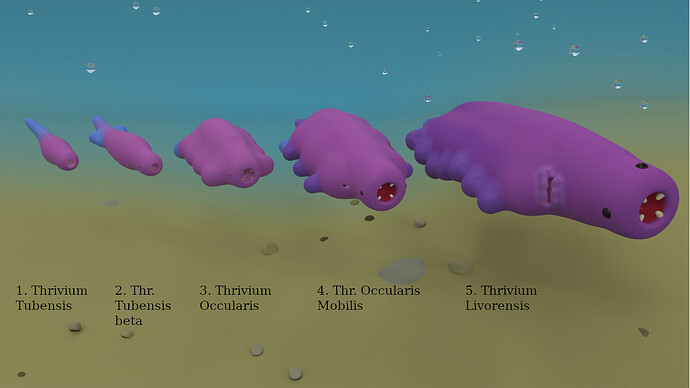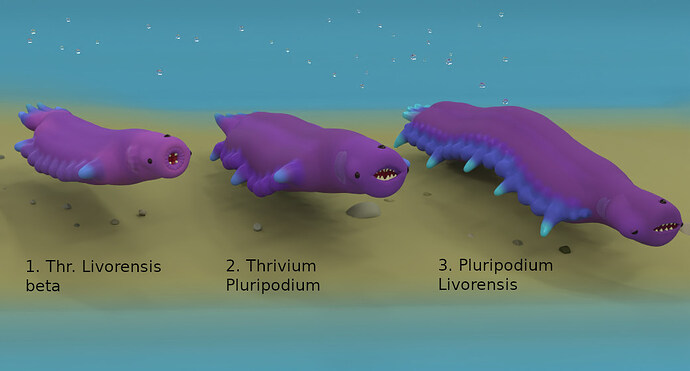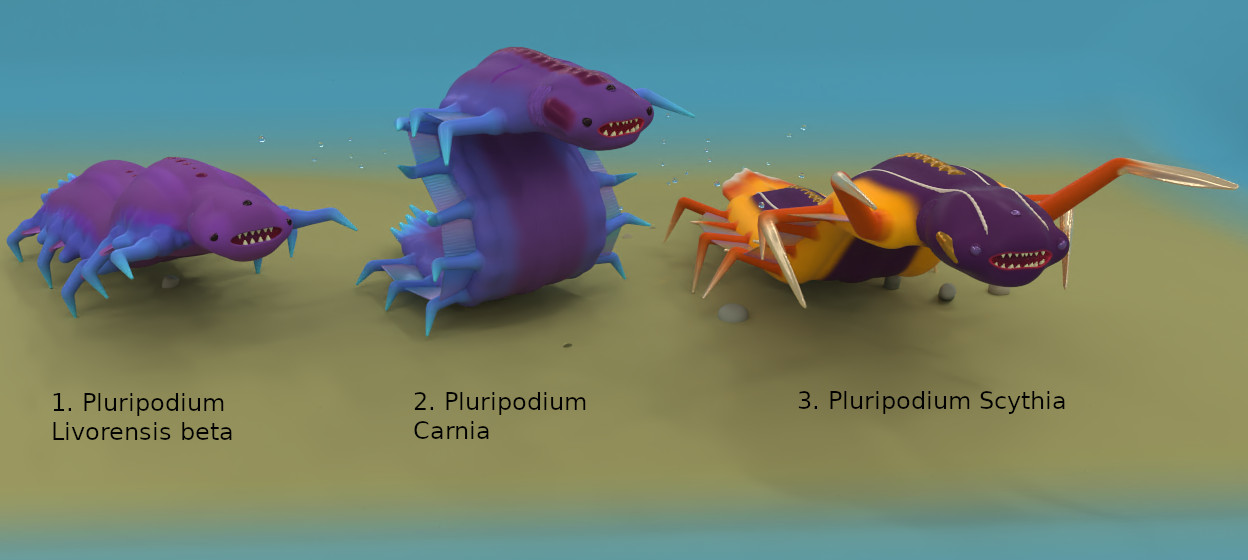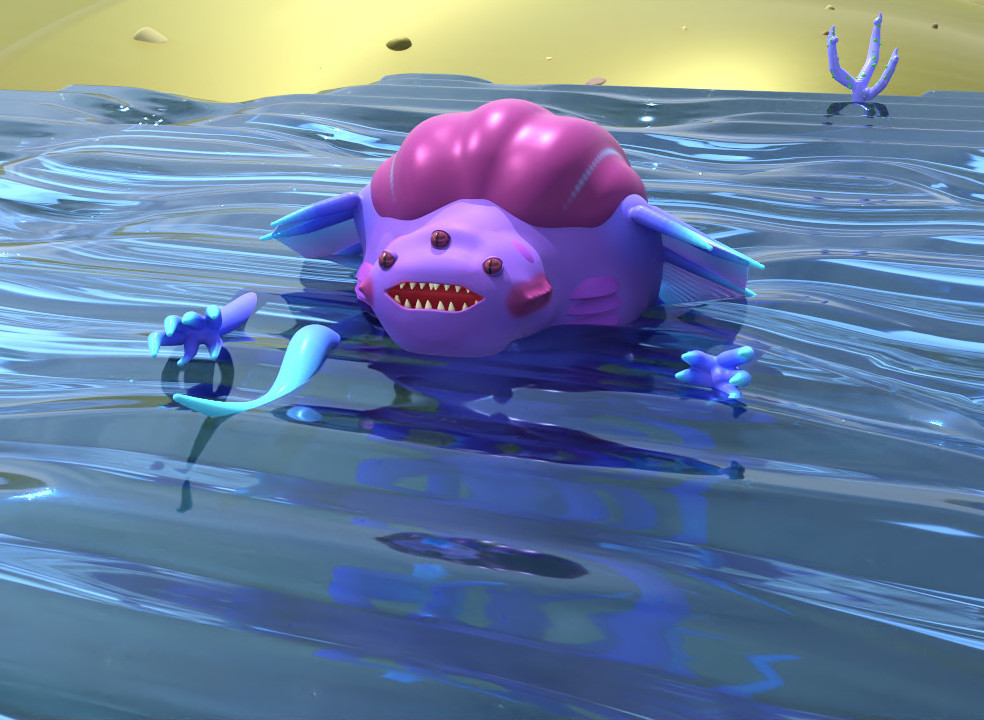After reading a mention of Womp 3D being based on the same kind of system Thrive aim to include for macroscopic creature modelling, I decided to check it out. I’ve been designing creatures which I would like to be able to create in Thrive, and considering the path of their evolution based on what might be possible between editor sessions. I plan to create a whole ecosystem eventually, and artwork depicting this.
Here is the first of my creature evolution images:
Here are some details of the different creatures:
- A simple worm, with a slightly differentiated tail. It has a vague mouth, with a membrane for absorbing cells.
- It has grown a little, developing some pseudopods on its rear section, and the mouth has become more defined. It has also developed light receptive areas at the front.
- This one has bulked out quite a bit, and is now able to feed on larger organisms. Its mouth has developed, including teeth to crunch through tougher prey. It now has eye holes, allowing more control over levels of incoming light.
- Movement capabilities have increased a lot, with pseudopods running along its sides, and a stronger tail. It has a much more developed digestive system, and respiratory system, with a more muscular mouth, and breathing holes.
- It is now much larger, with pseudopods along its full length, except for its head section. It has developed basic eyeballs and gills.
Creature details, part 2:
- Larger and more mobile than its predecessor, this creature is well adapted to hunting for easy prey. It has evolved a spinal column, more powerful mouth muscles, and a more prominent tail.
- This one has developed a more flexible spine, a jaw to help deliver a more powerful bite, and more effective gills.
- This creature has evolved for walking along the sea floor, allowing it to conserve energy, while scouting for prey with its lidded eyes. It can use its flexibility to evade potential attacks.
New creature details:
-
It has developed multiple legs, and some small patches of chitin along its back. This one is faster than its predecessor, and more effective at catching prey along the sea floor. However, it is only adept in this environment, as its swimming ability is poor.
-
A capable predator. This one has many short legs, with a membrane between them. It is a capable swimmer, undulating its legs and the attached membrane to propel itself forwards. Its head is more rounded, allowing it to more easily bite its prey, while using the forward-most limbs to attack and pin them down. It is very agile, able to bend and twist in all directions to attack or evade. It also has patches of chitin on its head and back for protection. It has a well-developed nervous system, with a full brain.
-
This is a species which has split off from the main evolutionary line I’m following. It is an aggressive and deadly predator of the deeps. It has longer legs, giving it more speed when pouncing on prey on the seafloor or in reefs. Its forward limbs have long, sharp claws like knives. It primarily attacks by stabbing and slashing at creatures, then biting once they are subdued. It can also use its forward limbs to attack prey which is hiding in narrow crevices.
And here’s a more scenic picture of a later creature at the ocean’s surface:
I will continue to expand this, and improve the visuals by importing to Blender. Womp is pretty easy to use, but fine detailing can be a challenge, and I often get a lot of lag. Let me know if you think it could be improved - including thoughts on evolutionary feasibility.



